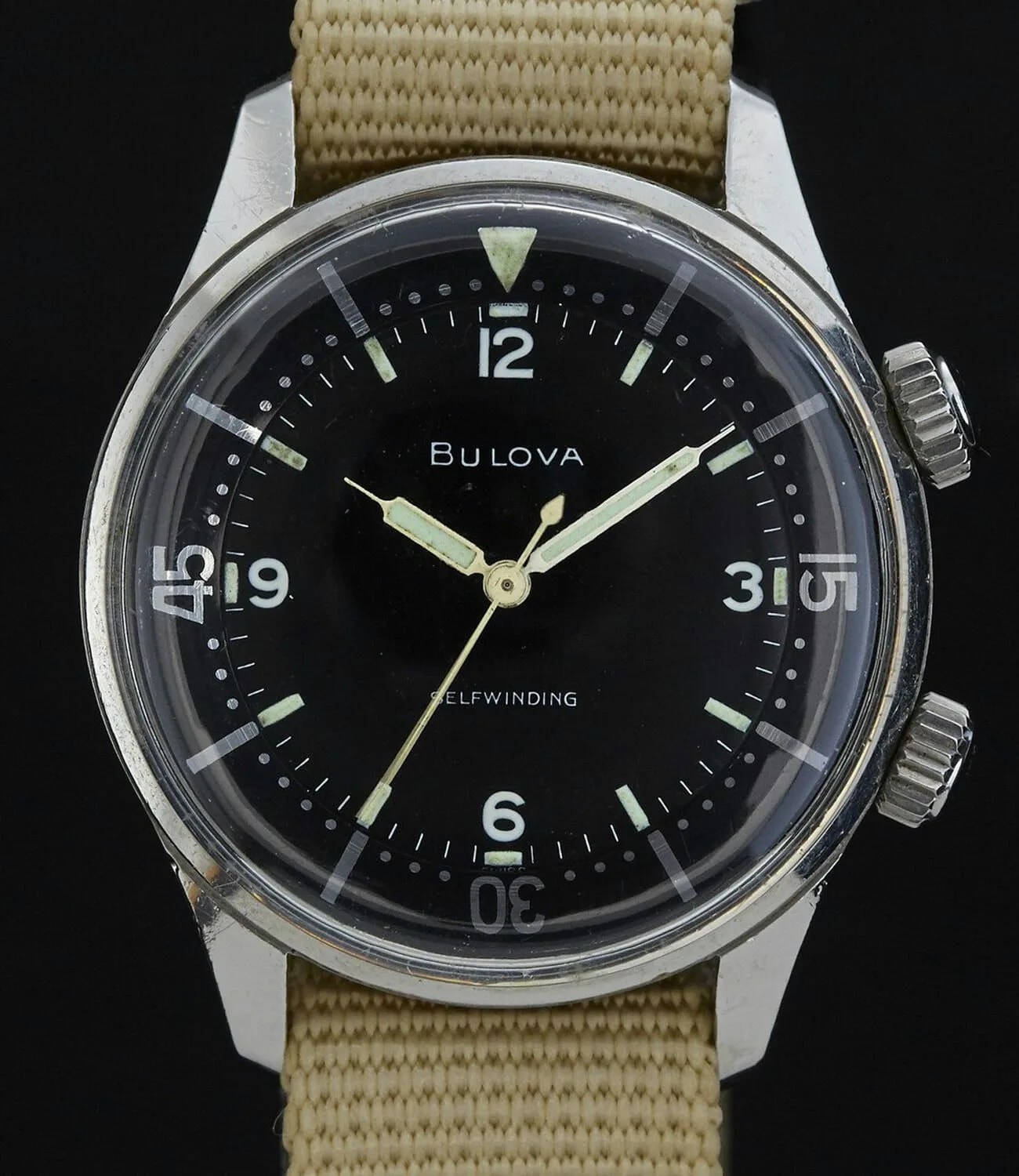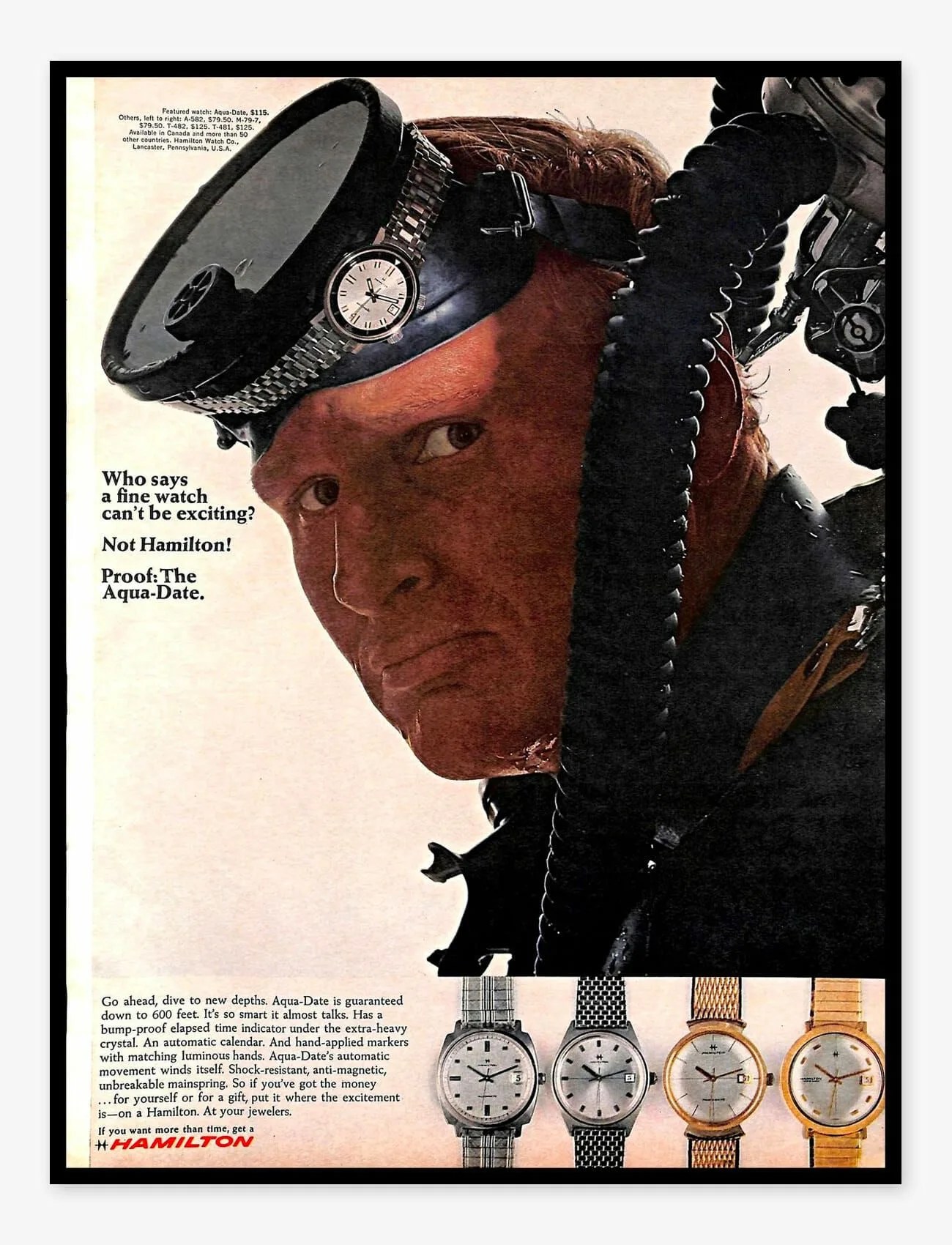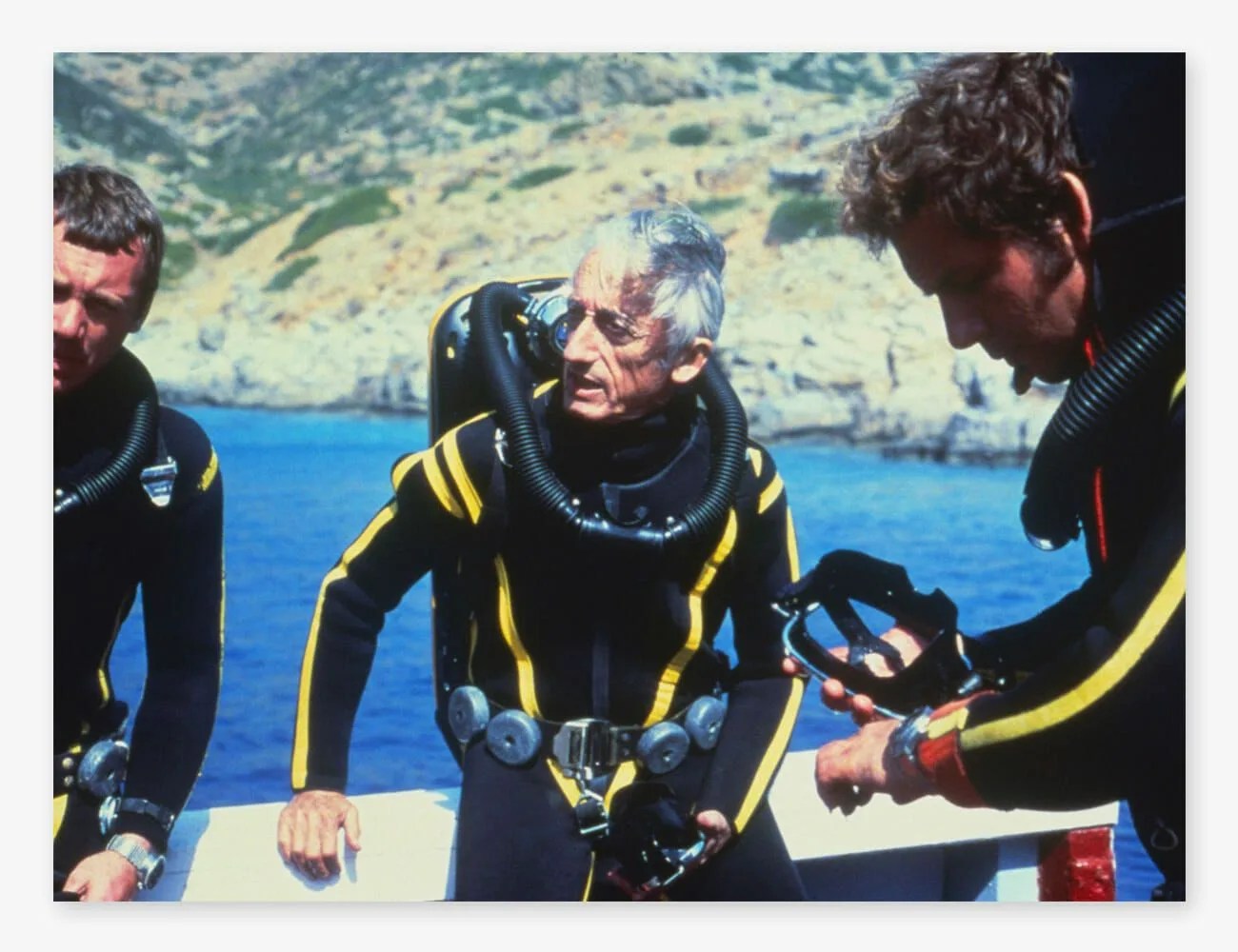When most people think of a dive watch, the first thing that comes to mind is the prototypical ratcheting bezel, with its chunky flutings and bold markers. But there was another style of diver that emerged in the early days of recreational diving and found great popularity – the Super Compressor. To be clear, the Super Compressor was itself not a watch. It was a patented type of watch case that was used by dozens of watch companies, some famous (Jaeger-LeCoultre, Longines) and some now lost in the abyss of history (Baylor, Precimax). This broad range of Super Compressor watches means that those looking for a great vintage dive watch have a lot of choices and some that are downright affordable. Let’s take a closer look at this iconic family of dive watches.
The Super Compressor watch case was patented in 1956 by Ervin Piquerez SA (EPSA), a now defunct Swiss firm, and manufactured by them for almost two decades. And while most of the Super Compressors could be identified by their twin crowns and internal rotating timing ring, the name actually referred to the case’s sealing technology, which made use of a spring-loaded caseback that sealed tighter as external water pressure increased. EPSA’s logo was a stylized diving helmet and could be found either on the outside or inside of the caseback. The crowns typically were without a watch company’s logo but were cross-hatched or, as the French more eloquently put it, “quadrille.”

In the early days of dive watches, conventional rotating bezels turned in both directions and only used friction to stay in their set positions. This presented the obvious risk that an accidental knock to the bezel could rotate it, altering the recorded bottom time, which carries the obvious hazard of artificially lengthening the time remaining and allowing the diver to overshoot a no-decompression limit. One solution to this potential problem was the development of a unidirectional ratcheting bezel. Another solution was the locking bezel, which required a button be pushed to release the bezel. A third solution was an elapsed-timing ring protected underneath the watch’s crystal where it could not be bumped. When the internal timing ring was introduced around 1960, many watch companies adopted it for their dive watches and a new aesthetic was created.
The twin-crown Super Compressor divers have always had a more modern and sleek look than the more brutish conventional divers. One might even call them “dress divers.” The subtlety of the timing ring being under the glass means that the watches don’t scream “tool watch” and allows the lines of the case to merge with the crystal. They generally sit lower on the wrist, which make them friendlier to shirt sleeves and they look better on leather straps than do external bezel divers. The twin crowns, positioned at 2 o’clock and 4 o’clock, add visual interest in much the same way a chronograph’s pushers do. Twin crown Super Compressors were generally made in one of two case sizes: 36mm or the rarer 42mm, both highly wearable modern sizes even today.

A vintage Hamilton advertisement.

